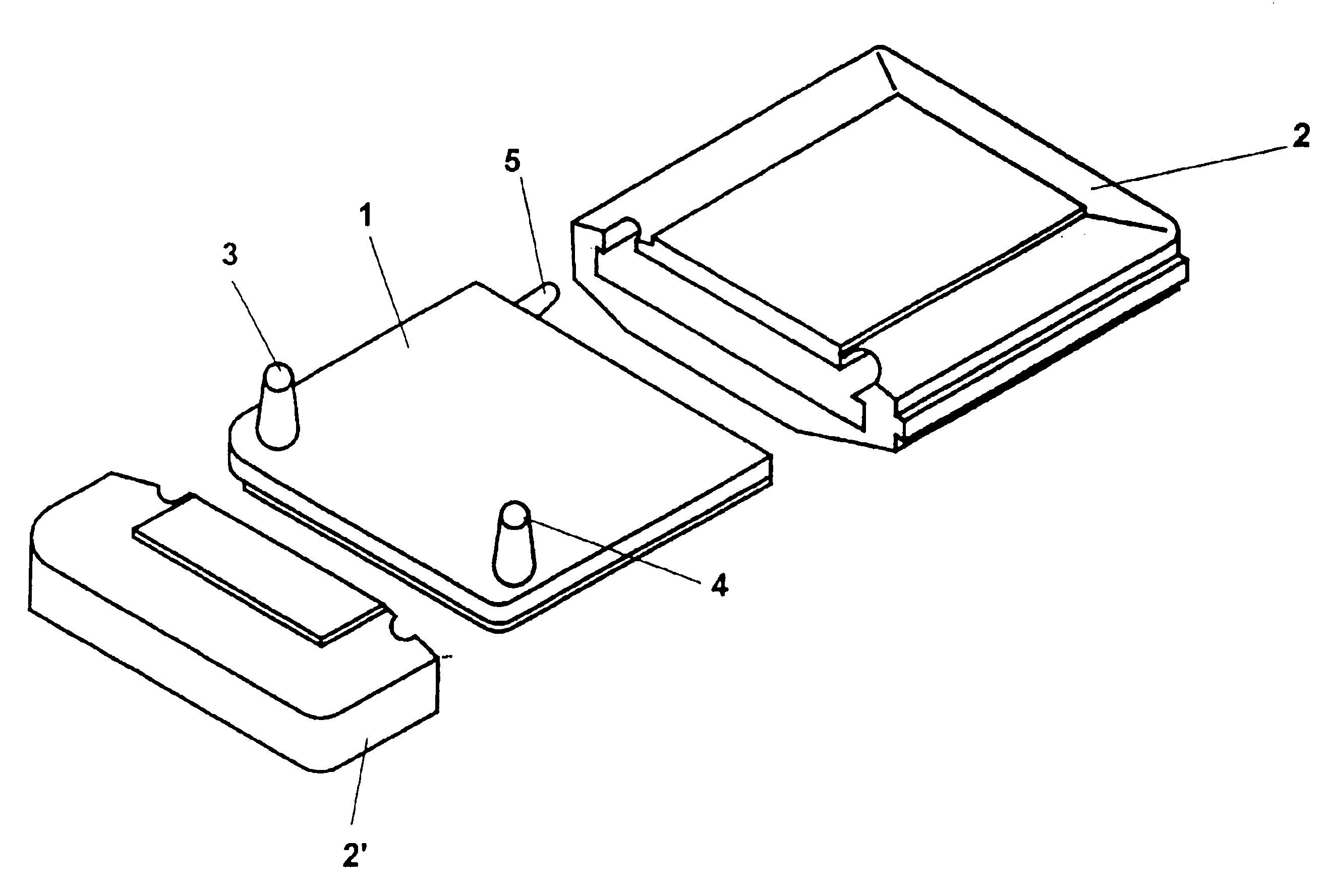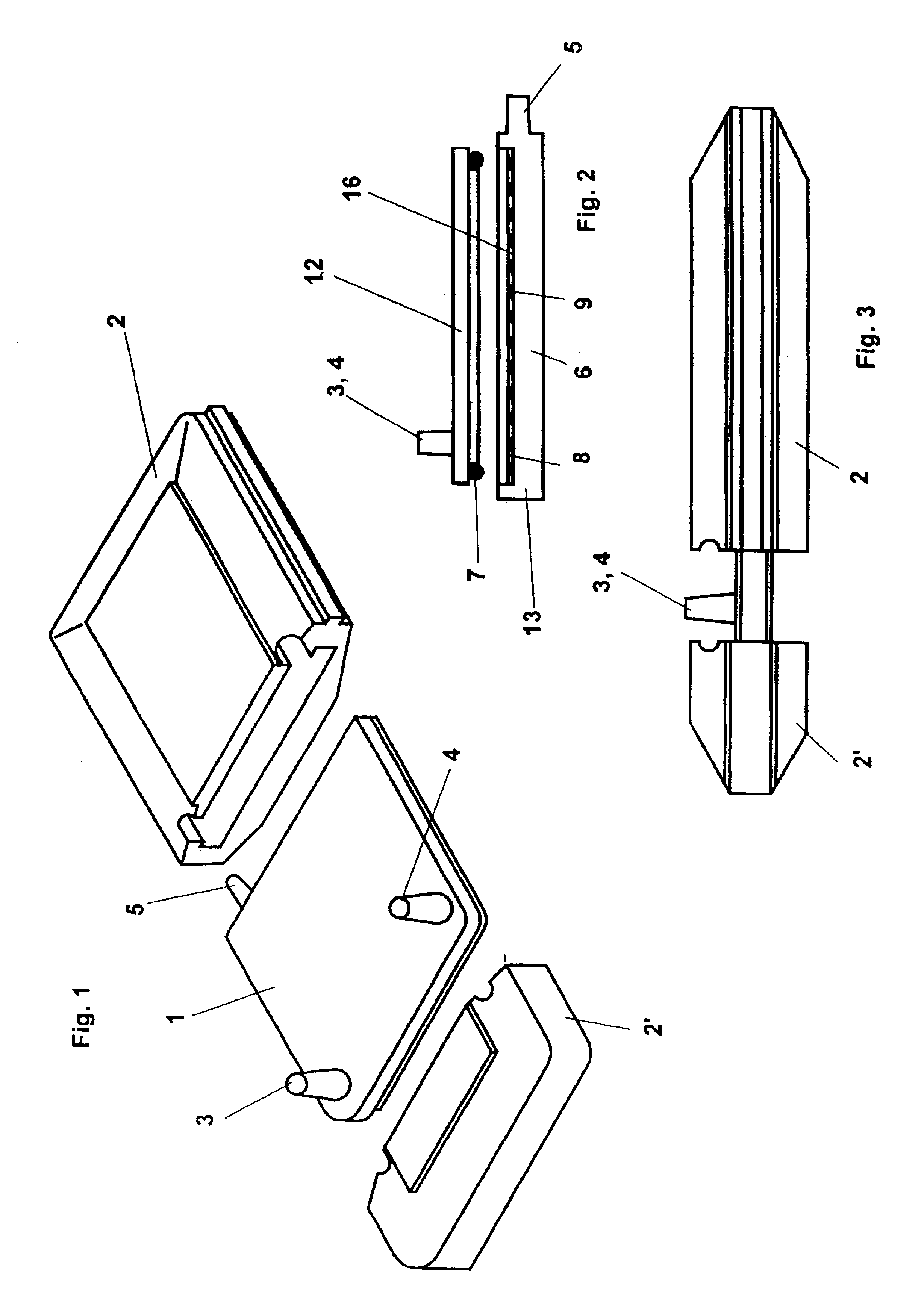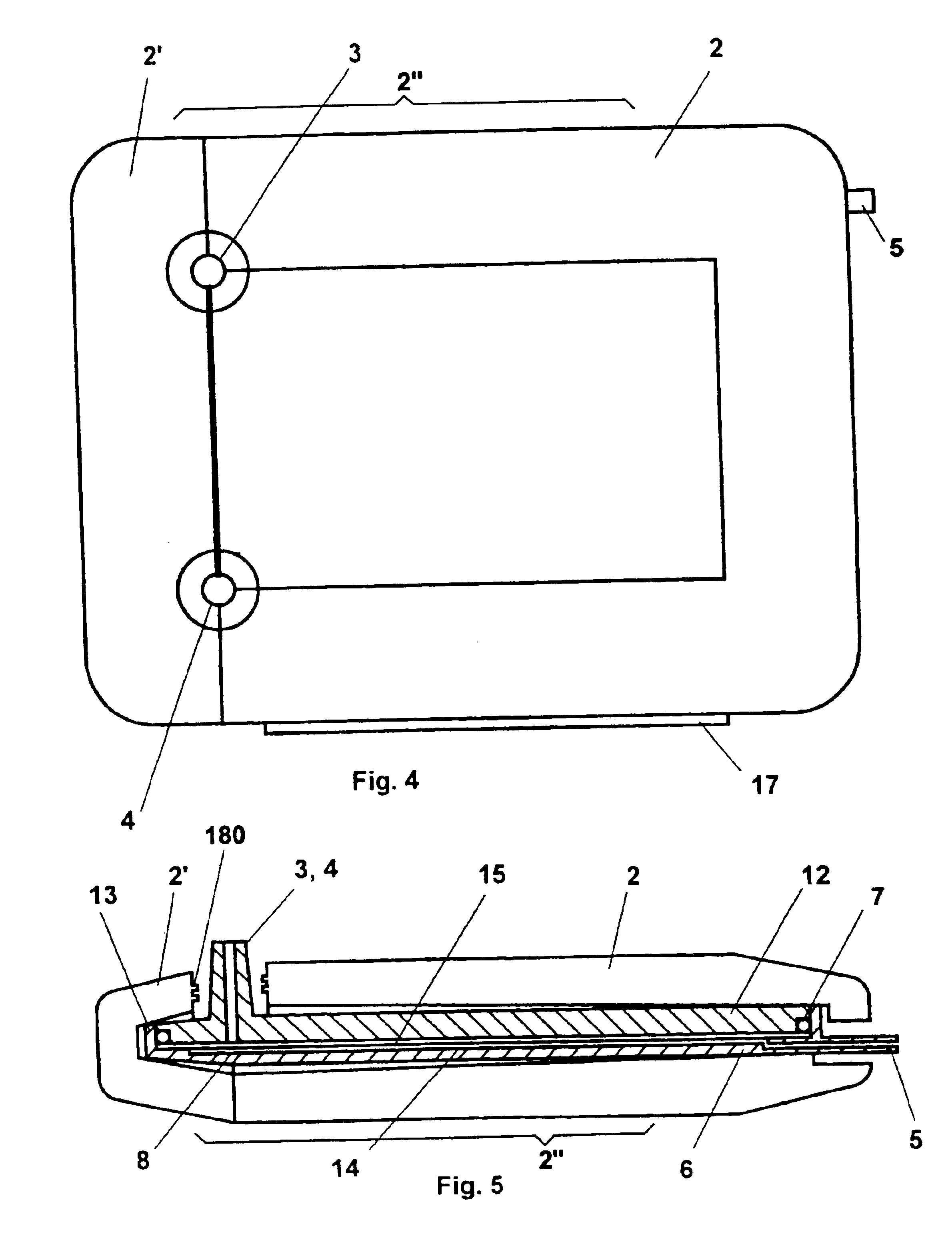Device for concentrating and purifying macromolecules
a technology for purifying macromolecules and devices, applied in the direction of analytical using chemical indicators, laboratory glassware, instruments, etc., can solve the problems of low manufacturing cost, difficult to obtain satisfactory compromises, pressure containment,
- Summary
- Abstract
- Description
- Claims
- Application Information
AI Technical Summary
Problems solved by technology
Method used
Image
Examples
Embodiment Construction
Referring now to the drawings, wherein the same numerals generally refer to like elements, there is shown in FIG. 1 an exploded perspective view of a device according to the present invention in the form of a tangential flow filtration module or cell which can be used, for example, for concentrating and / or fractionating macromolecules in a liquid. In a filtration system this type of filtration module is connected to a pump that typically draws liquid from a reservoir of liquid sample material and pumps it through the module and recirculates liquid sample through a loop that includes the module. The module is incorporated into and in fluid communication with this loop via feed inlet 3 and permeate outlet 4 arranged on filtration insert 1. The necessary system pressure is created by a flow restrictor (not shown) positioned at permeate outlet 4 of the cell.
As shown in FIGS. 3 and 6-7 filtration insert 1 comprises a concentration (retentate) chamber 10 in the exemplary form of a thin ch...
PUM
| Property | Measurement | Unit |
|---|---|---|
| concentration | aaaaa | aaaaa |
| compressive forces | aaaaa | aaaaa |
| molecular weight | aaaaa | aaaaa |
Abstract
Description
Claims
Application Information
 Login to View More
Login to View More - R&D
- Intellectual Property
- Life Sciences
- Materials
- Tech Scout
- Unparalleled Data Quality
- Higher Quality Content
- 60% Fewer Hallucinations
Browse by: Latest US Patents, China's latest patents, Technical Efficacy Thesaurus, Application Domain, Technology Topic, Popular Technical Reports.
© 2025 PatSnap. All rights reserved.Legal|Privacy policy|Modern Slavery Act Transparency Statement|Sitemap|About US| Contact US: help@patsnap.com



